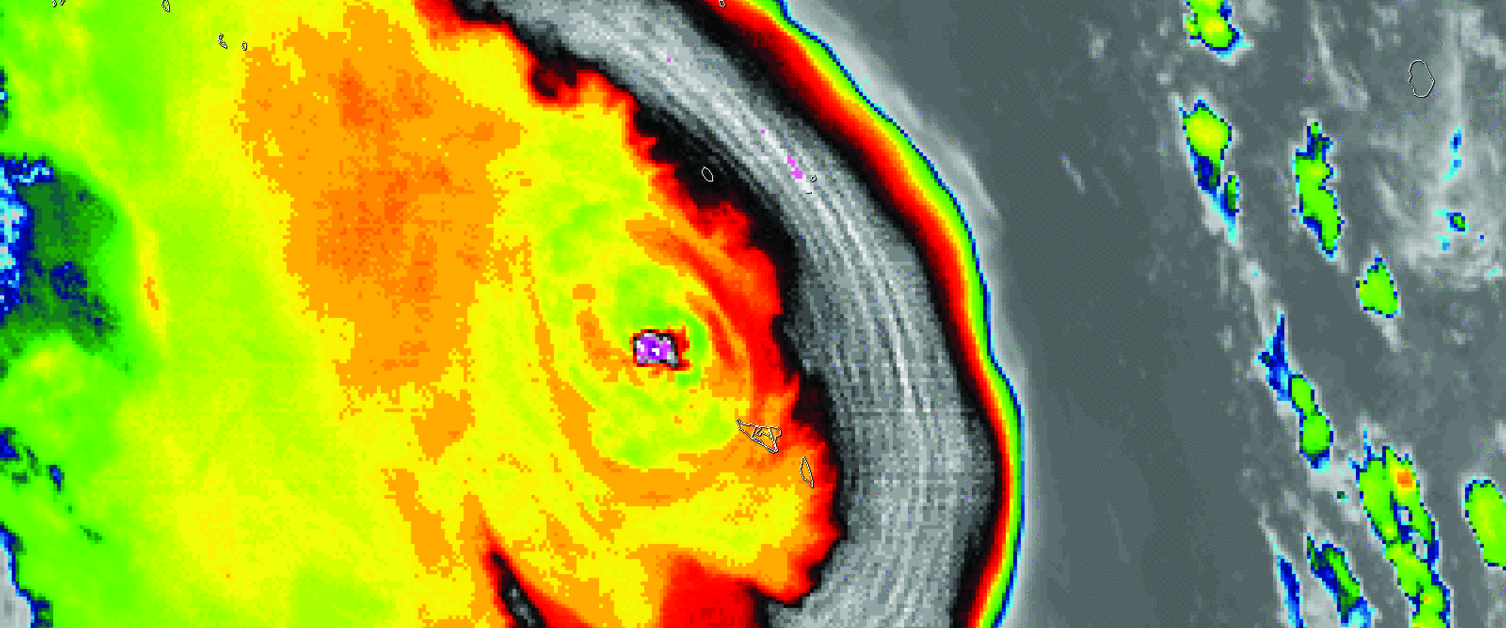Grave Waves: A BAMS Parcel on Gravity Waves
- By AMS Staff
- Jul 7, 2022
“It’s really unique. We have never seen anything like this in the data before.”
— Lars Hoffmann of Germany’s Jülich Supercomputing Centre, commenting on satellite images showing a pattern of atmospheric gravity waves after the climax of the eruption of the Hunga Tonga–Hunga Ha‘apai volcano in the South Pacific in mid-January. The images, which showed the waves as concentric circles extending from the ocean surface to the ionosphere, were captured by the Atmospheric Infrared Sounder, and Hoffmann noted that the instrument “has been operating for something like 20 years now and we have never seen such nice concentric wave patterns.” The waves formed when the volcano explosively erupted, emitting a plume of ash, smoke, and hot gases that created an overshooting top when it stopped rising through the lower atmosphere. The settling of the plume pushed the gravity waves outward in undulations, propelling them around the world in less than 24 hours. The waves demonstrated the “almost unimaginable amount of energy” released by the volcano, notes Mathew Barlow of the University of Massachusetts Lowell: they caused meteotsunamis and influenced local air pressure, and it is believed that they briefly cleared out fog in Seattle. “As this wave moved around the world, it essentially gave a little shove or a jiggle to the whole atmosphere,” says Barlow, who also looked at imagery taken by NOAA's GOES-West satellite to reveal the full extent of the waves. NASA researchers utilized satellite imagery to calculate that the plume rose 58 kilometers into the air, making it the highest known plume in the satellite era (surpassing the 1991 eruption of Mount Pinatubo in the Philippines). “The intensity of this event far exceeds that of any storm cloud I have ever studied,” notes Kristopher Bedka of NASA’s Langley Research Center. [Sources: Nature, NASA Earth Observatory]
IMAGE CAPTION: The plume emitted by the Hunga Tonga–Hunga Ha‘apai volcano in January exhibited a pronounced arc of cloud-top gravity waves along its eastern edge as the bulk of the cloud material drifted westward. Pulsing concentric shock waves were also seen in the infrared imagery, taken by NOAA's GOES-West satellite.
[Image Credit: Tim Schmit, NOAA/NESDIS/ASPB]
